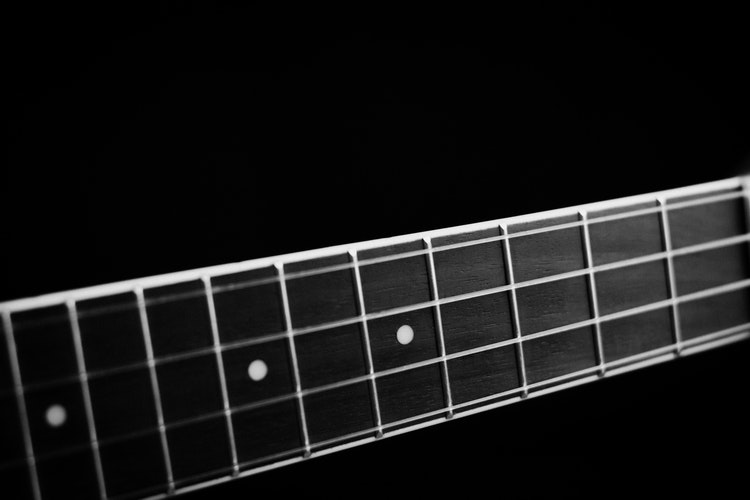Mandolu's Music Practice Tips Blogpost No.8 Learn to Play by Ear

Image Source
After some months of practicing chords and scales, giving your musical ear a chance to becomes familiar with the sounds of individual notes and where they are found on your instrument; you are ready to start playing simple melodies by ear.
Skill or Talent?
Although some people seem to have an innate gift for picking up tunes by ear after listening to it a couple of times, this is actually a skill anyone can learn if you follow a few practice techniques.If you really want to train your ear and you are already a "slave to the stave" (relying on sheet music or tabs), the first thing you need to do is to stop playing with the music in front of you. Start slowly, by having the music there but only glancing at it when you absolutely need to. After playing a tune a few times through, try to play it without looking at the music. If the whole tune is too much, start with a phrase at a time, committing each one to memory. Playing by memory is a great way to establish a baseline for playing by ear, as many songs and tunes contain the same or similar phrases and chord progressions.
Learn to Recognise Intervals
Intervals are the`distance between two notes. Intervals are always determined from lowest to highest not even if the higher note comes first in a piece of music.The first note can be any note and the interval is the number of steps between this note and the second note. For example if the first note is a C and the second note an E, this is a "third" interval. Typically intervals are practiced and tested as part of classical music examinations, but you do not need to know complex music theory to learn to recognise intervals.However intervals are divided into three types:
Perfect intervals: unison (1st), 4th, 5th or Octave (8th)
Major intervals:2nds, 3rds, 6ths and 7ths
Minor intervals: 2nds, 3rds, 6ths and 7ths (minor intervals are a semitone lower than the major interval)

Image Source
Starting Exercise
Before attempting to play a tune by ear, start with some simple exercises using your own voice and your instrument.
1.Sing two notes.
2.See if you can find those notes on your guitar or any instrument you play.
3.See if you can determine the lower note and discover the interval between these two notes.
4.Then sing the two notes again and play them again on your instrument. Try to memorize the sound relationship between these two notes.
- Sing a third note and again try to determine the interval from the note before it. Finding the note on your instrument will make this easier. Find this note on the instrument and play it after the first two notes.
- Sing the three notes again.
- Play them on your instrument.
- Check that the notes you are singing and the notes played sound the same.
- If they are not the same you need to determine if the note you are playing is too high or too low and try again and again until you get it right.
This is a vital part of ear training and may sound simple but after a few weeks of practicing this exercise you will be able to easily find any note that you sing.

Image Source
Choose a Simple Familar Tune
A vital ingredient to ear training is to be able to hear the tune you want to play in your head. Choosing something that is very familiar to you ensures that you know how the tune goes. Try singing it to yourself first. Once you are sure you know what notes to sing you are ready to move to your instrument.
A good tune to start with is Amazing Grace. Most people know this tune and can sing the notes easily.It is often played in the key of F (has 1 flat - b flat) The tune starts and ends on the tonic note F (except for the lead in note)
Find a recording of this tune and slow it right down. You can use VLC Media Player for this if you have an mp3 recording, or there are various apps that will slow down tunes for you like The Amazing Slow Downer, YouTube settings also allow you to slow down the song without changing the pitch. I actually use an app called CAPO available for ios free as a macupdate
Now pick up your instrument and play the F major scale up and down several times to show your fingers where all the notes are in that scale. The first and last notes of many songs are typically the tonic note. The first note of your scale is the second note of the tune, so see if you can find the lead-in note. (hint- its a few notes below the F) Here is the first line from Amazing Grace to give you a place to start.
C F AF A G F D C
A - maz - ing -- grace how sweet the sound
Goog luck with you ear training practice I wish you every success
If you missed any of my other posts in this series here are the links to them below:
Mandolu's Music Practice Tips Blogpost No. 1
Mandolu's Music Practice Tips Blogpost No. 2 Fun With Scales
Mandolu's Music Practice Tips Blogpost No. 3 Listening Skills
Mandolu's Music Practice Tips Blogpost No. 4 Relaxation
Mandolu's Music Practice Tips Blogpost No. 5 Practice with a Friend
Mandolu's Music Practice Tips Blogpost No. 6 Recordings & Videos
Mandolu's Music Practice Tips Blogpost No. 7 Sheet Music vv Learning by Ear

Comments
You can login with your Hive account using secure Hivesigner and interact with this blog. You would be able to comment and vote on this article and other comments.
No comments